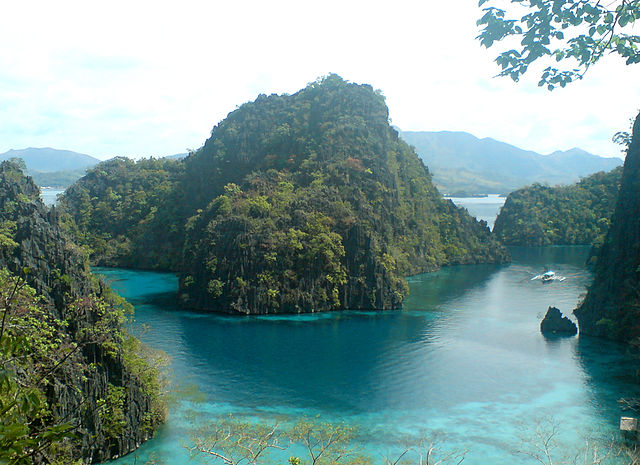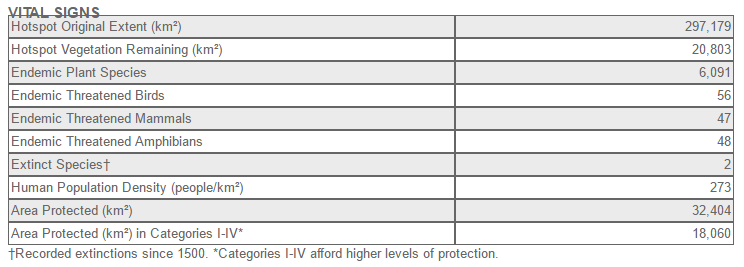Philippines as a biodiversity hotspot
What is a biodiversity hotspot?
There are certain regions around the world that are distributed with high concentrations of biodiversity. They are naturally gifted with a vast existence of biological resources. However, many of these resources are already at risk of extinction because of man-made destruction resulting to habitat degradation and biodiversity loss. We call these places biodiversity hotspots.
There are 36 biodiversity hotspots found all over the world. These hotspots serve as a repository of a remarkable life-forms which unfortunately are found to cover only about 2.3% of the planet’s land area1. It is indeed alarming to know that this number could further be reduced each year as our environment face greater risk of destruction.
Why is it important? How does it help in natural resource management and conservation?
Biodiversity hotspots are important areas that are used to establish priorities in conservation. They provide a focus on natural resource management considering the fact that we have very limited time and budget to do a surmountable action to rescue our biodiversity before they vanish permanently to extinction.
According to Myers et al., biodiversity hotspots are a “silver bullet” strategy that meets our pressing conservation needs with the least funding cost1. The concept of biodiversity hotspots can provide more effective results instead of other conservation approaches such as targeting population or, other animal or plant groups. It is because biodiversity hotspots serve as the containment of an exceptional number of endemic species and likewise the ones experiencing habitat loss in unbelievably rapid rate2. About 70% of the original vegetation of each hotspot are already gone.
Norman Myers is the British ecologist who authored the biodiversity hotspot concept in 1988 to answer the need of conservationists in identifying areas that require immediate conservation response.

The 36th biodiversity hotspot is not yet included in the map shown above. It is the North American Coastal Plain which extends from Northern Mexico to Southern Maine, also found along the coast and encompasses some areas within major U.S. cities, especially New York City and Washington, D.C.. It’s a sanctuary for 1,816 plant species, 51 bird species and 114 mammal species that are all endemics3.
These are all what’s left of the biodiversity richness in our ecosystems. They are but fragments of what the earth originally had. Can you picture how much we had in the beginning? It is noteworthy that our conservationists were able to identify representatives of our natural and healthy ecosystems before they are harmed or altered. We’re now on our way to saving them.
Philippines: A Biodiversity Hotspot

Philippines is the world’s second largest archipelago, located in the southeast region of Asia and westernmost Pacific ocean. It is considered to be a mega – diversity country because of the exceptional diversity in ecosystems, species and genetic resources found within its 7,100 island territory.
Philippines is known to be a home to 52,177 described species of which 50% or more are believed to be endemic. It is possible that the Philippines may practically have more biodiversity on a per unit basis.
Unfortunately, its species richness, high endemism and diversity are all at risk, qualifying it to be a biodiversity hotspot. Threats come from habitat alteration and loss brought about by the destructive resource use, development related activities and human population pressure. The overexploitation of natural resources, reduced the forests to an alarming 24% from its original cover.
Past Revisited

Philippines was used to be covered with rainforest some hundred years ago. An abundance of lowland rainforest distinguished by tall dipterocarps served as its cover. While there were montane and mossy forests at higher elevations which were characterized by smaller trees and vegetation.

Center of marine biodiversity
Philippines is also located in the heart of the Coral Triangle, which is the world’s center of marine biodiversity. This makes the Philippines the center of the center of the marine biodiversity. This particular place is the Verde island passage that sits between Batangas and Mindoro. It was found to have the most number of marine species. The reefs by themselves were found to host about 60% of shore fishes and over 300 coral species. For that, scientists recognize the Verde Island passage as the world’s marine counterpart of the Amazon River Basin.
Again, this biodiversity rich area is at risk of habitat loss and destruction.
Lessons Learned from Our Vanishing Biodiversity
“Earth provides enough to satisfy every man’s needs, but not every man’s greed.” Mahatma Gandhi
There are many lessons that can be learned from biodiversity hotspots and the Philippines itself, being one of the top priorities of the hotspots. The ecosystems to which biodiversity thrives are disappearing at a rapid rate than they could be saved. This has inspired conservationists to come up with a better strategy that responds to such an alarming situation.
Management and conservation actions are certainly necessary and must be implemented quickly. However, this is not a one-man’s job, as we all know it takes a community of people to save and preserve biodiversity. We also need effective policies that will protect our biodiversity and their habitats, and that will enforce the sustainable use of all consumers.
Each of us has its own part to take on this mission to conserve our biodiversity and ecosystems. Let’s educate ourselves on what can be done. Let’s take action before we run out of time.
References:
1 Biodiversity Hotspots
2 Biodiversity hotspots are more effective.
3 The 36th Biodiversity Hotspot
Supplementary Resource:
Do you work on maps? Do you want to have a complete shapefile of all biodiversity hotspots? You can download it for free here.
Photo Credit:
Featured Image – Sierra Madre Mountain Range in the Philippines | CC Image courtesy of Ramon FVelasquez

